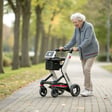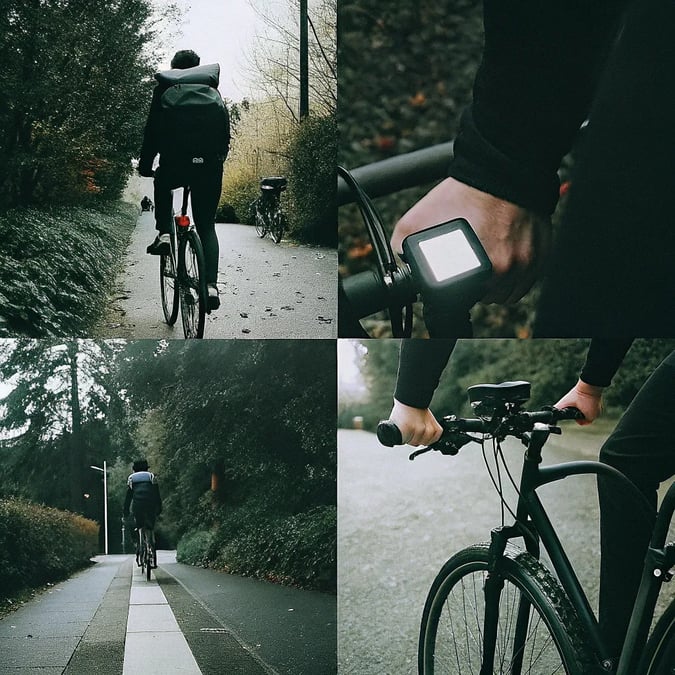
Transforming your regular bicycle into a reliable daily commuter doesn't necessarily require buying an entirely new bike. With strategic tech upgrades, you can enhance safety, comfort, and functionality while making your commute more enjoyable. As someone who's upgraded several bikes for daily use, I've learned which investments truly make a difference and which ones you can skip.
Finding the Right Balance Between Practicality and Investment
Many cyclists struggle with deciding how much to invest in a commuter bike. According to discussions on Reddit, there's a growing consensus that expensive bikes might not be ideal for daily commuting, particularly due to theft concerns. One user noted, "Bikes seem like they can be stolen no matter what (if a thief wants to). Even if you're cautious, in a safe area, etc." This reality has led many commuters to opt for mid-range bikes with strategic upgrades rather than high-end models.
The team at Bicycling Magazine actually makes "The Case for a Crappier Commuter," pointing out that many cyclists are "unnervingly stubborn about turning [midrange bikes] into a daily workhorse." There's wisdom in this approach—a decent, reliable bike with the right upgrades often makes more sense than an expensive model that becomes a constant theft worry.
Let's explore the most practical tech upgrades that transform any bike into a commuting powerhouse without breaking the bank.
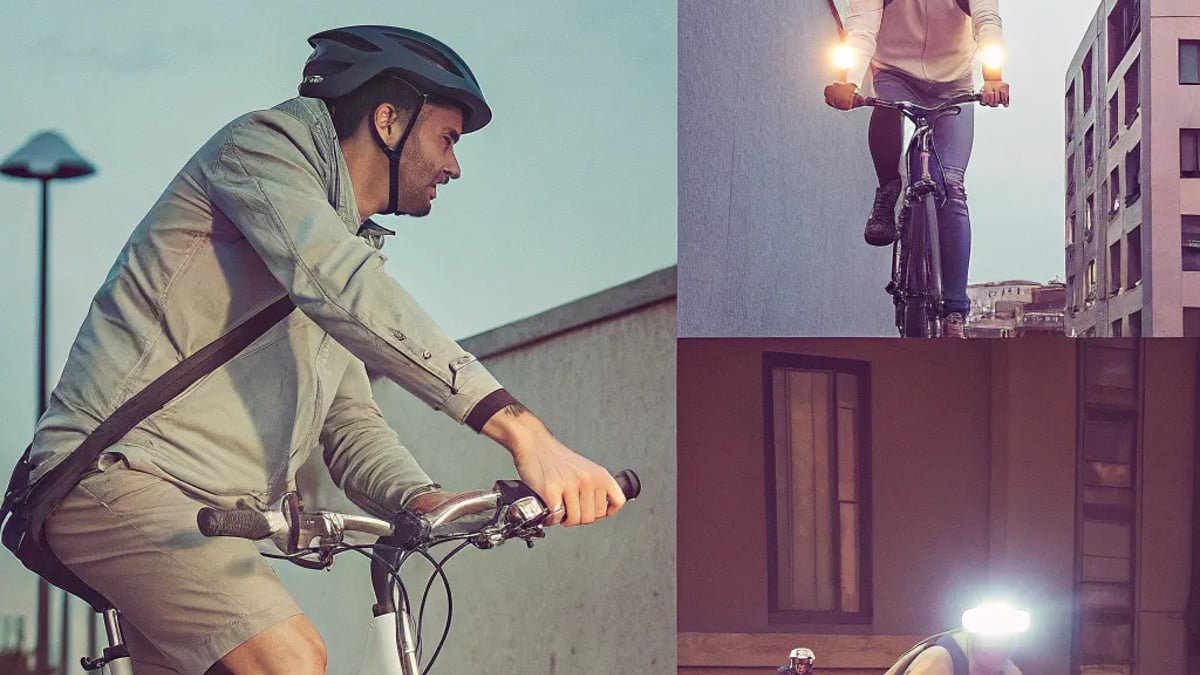
Essential Lighting Systems for Safety
Nothing matters more than visibility when commuting. Modern bike lights have come a long way from the dim, battery-draining options of the past.
Front Lights: Look for USB-rechargeable options with at least 400 lumens for urban commuting. The Cygolite Metro series offers excellent brightness with side illumination for cross traffic awareness. For darker routes, consider investing in an 800+ lumen light with varied brightness settings to conserve battery.
Rear Lights: A good taillight should offer multiple flash patterns and steady options. The Bontrager Flare RT and Garmin Varia radar taillight are standouts—the latter actually detects approaching vehicles from behind and alerts you through a paired device.
Integrated Options: Some newer systems like the Lupine SL integrate with e-bike batteries or offer daytime running capabilities that significantly increase your visibility even in bright conditions.
I switched to a rechargeable system last winter after getting caught with dead batteries on a rainy commute home. The peace of mind alone was worth the upgrade cost.
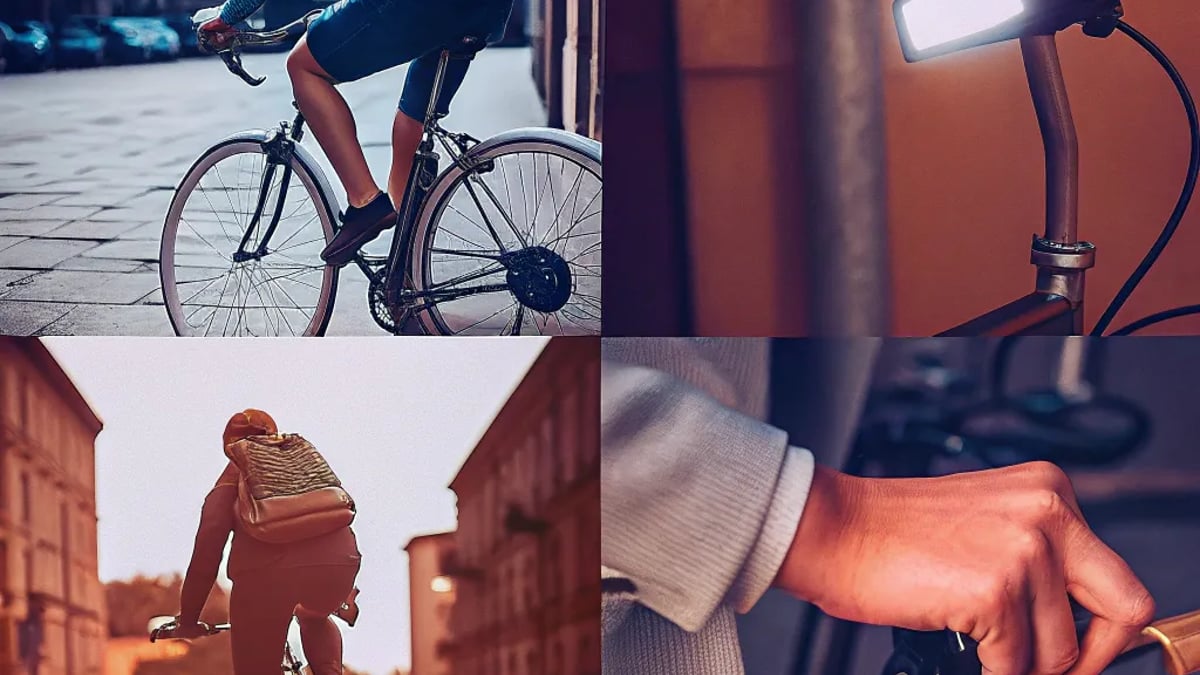
Smart Security Solutions
Bike theft remains a major concern for commuters. While no security system is foolproof, modern tech offers better protection than ever before.
GPS Trackers and Smart Locks
Hidden GPS trackers like the Invoxia Bike Tracker can be concealed inside your frame or under accessories. These devices pair with smartphone apps to alert you of movement and help recover your bike if stolen.
Smart locks have also evolved significantly:
- The Kryptonite New York Fahgettaboudit paired with their tracking service offers robust protection
- Bluetooth-enabled locks like the ABUS 770A SmartX allow keyless entry via smartphone
- Solar-powered options like the Nulock eliminate battery anxiety
Remember that combining multiple security methods (like a U-lock with a cable for wheels) creates the most effective deterrent.
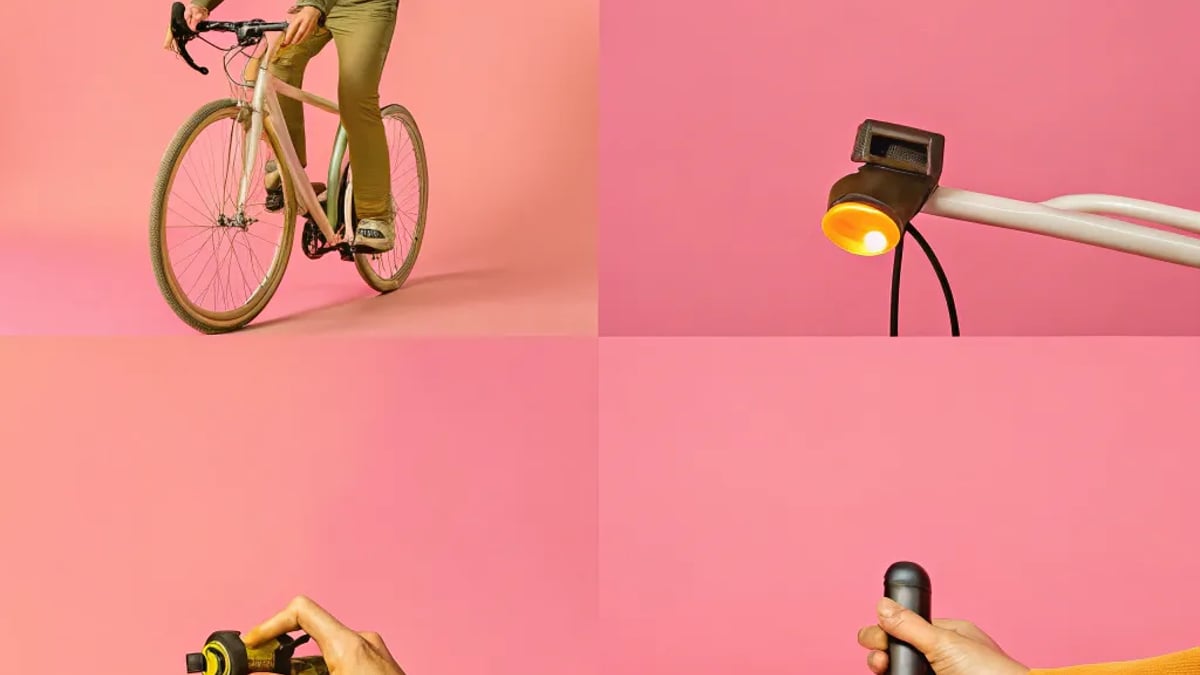
Practical Carrying Solutions
Commuting requires carrying gear, and the right cargo solutions make a huge difference in comfort and convenience.
Rack Systems: A quality rear rack opens up numerous possibilities. The Topeak Explorer can support panniers, trunk bags, or even a child seat. For front-loading options, the Surly 8-Pack or Specialized Pizza Rack allow you to keep valuables in sight.
Tech-Enhanced Bags: Modern panniers have evolved beyond simple sacks. The Ortlieb Back-Roller Classic remains the gold standard for waterproofing, while the Two Wheel Gear Pannier Backpack Convertible offers flexibility for office workers who need a professional-looking bag off the bike.
Frame Bags: For items you need quick access to, consider a frame bag with phone-compatible touchscreen windows. These keep your device accessible for navigation without removing it.
Converting Your Regular Bike to Electric
Perhaps the most transformative upgrade is adding electric assistance. Contrary to popular belief, you don't need to buy a dedicated e-bike.
Conversion Kits and Add-On Motors
Clip-on electric drives have revolutionized the conversion market. Companies like Clip.Bike offer what they call "the world's 1st Plug & Play e-bike tech," allowing you to add electric assistance without permanent modifications.
Other notable options include:
- Hub Motor Kits: Relatively affordable and straightforward to install on most bikes. The Bafang rear hub motor kit offers good value.
- Mid-Drive Conversions: More expensive but provide better weight distribution and performance. The Bafang BBS02 and TSDZ2 are popular choices.
- Friction Drives: The simplest to install, these press against your tire to provide assistance. The Rubbee X exemplifies this approach.
I helped a colleague convert her vintage steel frame bike last summer, and she reports it's completely changed her 7-mile commute—she arrives at work without needing a shower and change of clothes.
Weather Protection Upgrades
Commuting year-round means facing various weather conditions. Tech can help here too.
Fenders and Mudguards
Modern fenders have improved dramatically with quick-release systems and better coverage. The Portland Design Works Full Metal Fenders offer nearly complete protection while SKS Raceblade Pro fenders can be quickly attached and removed for fair-weather riders.
For rainy climates, consider extended mudflaps that protect both you and riders behind you.
Clothing and Visibility Tech
High-visibility clothing with reflective elements is essential, but new products take this further:
- The Proviz REFLECT360 jacket appears normal in daylight but becomes blindingly reflective when hit by headlights
- LED-integrated vests and backpack covers provide active lighting rather than just reflection
- Smart helmets like the Lumos Ultra incorporate brake lights and turn signals
How Much Should You Invest in a Commuter Bike Setup?
This is where personal circumstances matter greatly. According to The Financial Diet, "Be prepared to spend a total of roughly $500 on a bike, lights, and a good helmet." This remains a reasonable starting point, though inflation has pushed this figure higher since that 2015 estimate.
Consider your commuting distance, terrain, climate, and security situation. Someone with a secure indoor parking option at work might reasonably invest more than someone locking up on a public rack.
A sensible approach might be:
- Mid-range bike ($400-800)
- Quality lock system ($80-150)
- Lighting ($60-120)
- Fenders/racks ($50-100)
- Bags ($80-200)
Electric conversion represents a larger investment ($300-1,500) but can be justified by comparing to public transit costs or car expenses over time.
Do I Really Need a Professional Bike Fit for Commuting?
One Reddit user expressed frustration about the cycling community's emphasis on professional bike fits, stating "95% of cyclists don't need one." For casual commuters, this perspective has merit.
While competitive cyclists benefit from precision fitting, most commuters can achieve reasonable comfort through:
- Watching YouTube tutorials on basic fit principles
- Making incremental adjustments to saddle height and position
- Trying different handlebar positions
- Considering ergonomic grips or a more comfortable saddle
That said, if you're experiencing persistent pain after these adjustments, a basic professional fit (often available for $75-150) might be worthwhile, especially for commutes longer than 5 miles each way.
Maintenance-Reducing Upgrades
Nothing derails a commuting routine like mechanical issues. These upgrades minimize maintenance:
Belt Drives: Systems like the Gates Carbon Drive eliminate chain maintenance and last significantly longer than traditional chains. They're clean, quiet, and nearly maintenance-free.
Puncture-Resistant Tires: The Schwalbe Marathon Plus remains the gold standard for commuters, with remarkable puncture protection. Continental Gatorskins offer a more performance-oriented alternative.
Sealed Bearing Hubs: Quality sealed bearing hubs require far less maintenance than cup-and-cone systems, especially in wet conditions.
Hydraulic Disc Brakes: Once set up properly, hydraulic disc brakes require minimal adjustment while providing consistent stopping power in all conditions.
Tech for Tracking and Improving Your Commute
For data-minded commuters, tracking technology offers insights and motivation.
Bike Computers: Simple wireless computers like the Cateye Padrone provide speed and distance information, while GPS units like the Wahoo ELEMNT BOLT offer navigation and performance metrics.
Smartphone Apps: Strava, Komoot, and Ride with GPS not only track your rides but help discover better routes shared by other commuters.
Smart Helmets: Products like the Coros SafeSound integrate Bluetooth speakers, allowing you to safely listen to navigation instructions or music while maintaining awareness of traffic sounds.
Real-World Considerations for Daily Commuters
As someone who commutes by bike most days, I've learned that practical concerns often outweigh performance features:
- Reliability trumps weight: A slightly heavier but bombproof component is better than an ultralight part that fails regularly.
- Visibility matters more than aerodynamics: Choose gear that makes you seen, even if it's not the most streamlined option.
- Comfort over speed: A slightly more upright position might be slower but prevents neck and back strain during daily rides.
- Serviceability matters: Choose components that local bike shops can easily service or that you can maintain yourself.
Making Your Commuting Bike Uniquely Yours
While functionality is paramount, personalizing your commuter creates an emotional connection that encourages regular use:
- Custom frame bags in distinctive colors
- Unique bell or horn that makes you smile
- Handlebar tape or grips in your favorite color
- Spoke lights or wheel LEDs for extra visibility and style
My commuter has purple anodized valve caps—a tiny detail that brings me joy every time I see them, even after a tough day at work.
Conclusion: Start Simple, Upgrade Strategically
The perfect commuter bike evolves over time as you learn your preferences and needs. Rather than attempting a complete transformation at once, consider upgrading incrementally:
- Start with safety essentials (lights, reflectors)
- Add comfort improvements (grips, saddle, position adjustments)
- Incorporate practical additions (fenders, racks)
- Finally, consider performance upgrades (tires, drivetrain)
Remember that the best commuter bike is the one that reliably gets you to your destination while making the journey enjoyable. Sometimes that means a "crappier commuter" with thoughtful upgrades rather than an expensive showpiece that causes anxiety every time you lock it up.
Disclaimer: This content is for informational purposes only and not a substitute for professional advice. Always consult with a qualified bike mechanic before making significant modifications to your bicycle, especially those affecting braking or steering systems. The author and publisher are not responsible for any injuries or damages resulting from following the suggestions in this article.
Tags

About Rafael Mendoza the Author
Rafael Mendoza, an avid cyclist and urban planner, has dedicated over a decade to mapping out safe and efficient cycling routes in bustling city environments. His extensive research and hands-on experience make him a leading expert in transforming urban landscapes into cyclist-friendly spaces.
Recommended Articles
2025 BMW X3 Raises the Bar for Compact Luxury Crossovers
Discover the 2025 BMW X3, a compact luxury crossover that combines performance, design, and advanced technology to set a new standard in its class.
2025 Hyundai Ioniq 6 Is the Sleek Electric Sedan of the Future
Discover the 2025 Hyundai Ioniq 6, an electric sedan with sleek design, advanced technology, and impressive range for modern drivers.
This Mobility Device Is Replacing Walkers in 2025
Explore how the Camino smart walker is revolutionizing mobility for seniors in 2025, enhancing independence and safety with cutting-edge technology.
Smart Rollators The Future of Senior Mobility Has Arrived
Discover how smart rollators are enhancing senior mobility, providing safety features and health monitoring that foster independence and confidence.
A Spoon of This Oil Goodbye Stiff Joints
Discover how a daily spoonful of olive oil can ease joint stiffness and improve mobility. Simple dietary changes can lead to significant benefits.



